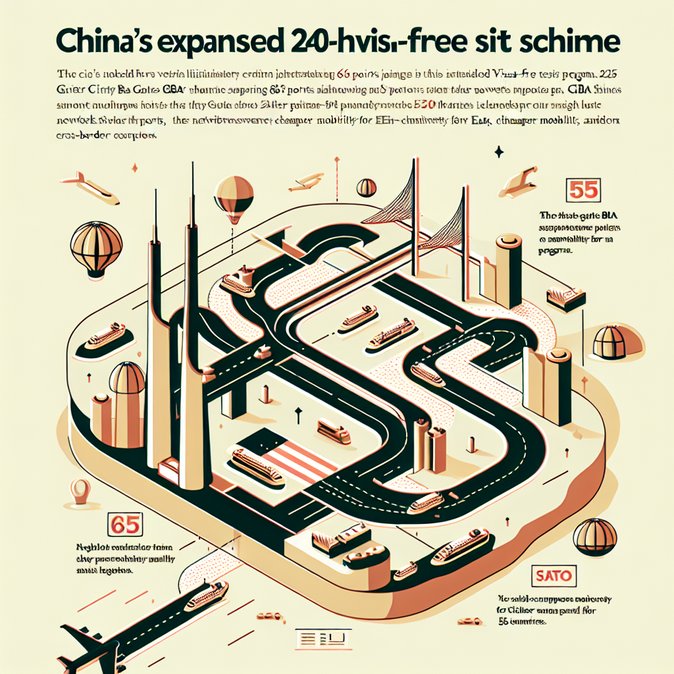
Reporting from Vientiane on 8 November 2025, the Laotian Times dissected how China’s latest immigration tweaks will turbo-charge cross-border flows into the Guangdong-Hong Kong-Macao Greater Bay Area (GBA). Under measures that took effect on 5 November, five new entry points – Guangzhou Pazhou Ferry Terminal, Hengqin Port, Hong Kong-Zhuhai-Macao Bridge, Zhongshan Port and Hong Kong’s West Kowloon high-speed rail station – now participate in the 240-hour (10-day) visa-free transit regime.
The additions raise the national tally to 65 qualifying ports. Eligible travellers from 55 countries can enter visa-free, roam designated parts of Guangdong plus other permitted provinces, and depart through any of the 65 ports within ten days. The move dovetails with newly announced 24-hour air-side transit at ten secondary airports, creating what officials call an "inter-locking, multi-modal” entry network.
![Greater Bay Area set for passenger surge as China adds five ports to 240-hour visa-free network]()
Guangzhou’s trade-show sector is an immediate winner. The Canton Fair organiser told local media it expects a 25 % rise in foreign attendance at the Spring 2026 session because overseas buyers can now ride the airport train directly to Pazhou without a visa. Macao integrated-resort operators have also welcomed the change; marketing teams can bundle Macao gaming nights with Hengqin meetings under a single 10-day stay, avoiding the previous double-entry visa cost.
Policy analysts note that Beijing is effectively using the GBA as a pilot zone for seamless cross-border mobility, with lessons likely to migrate to the Yangtze River Delta and Beijing-Tianjin-Hebei corridors. Companies running regional headquarters in Hong Kong, supply-chain hubs in Dongguan and R&D labs in Shenzhen stand to benefit most.
Action points for mobility leads include updating invitation letters to reference the new ports, liaising with ferry and HSR operators about ticket proof accepted by immigration, and revising per-diem budgets as more staff opt for side-trips within the 10-day window.
The additions raise the national tally to 65 qualifying ports. Eligible travellers from 55 countries can enter visa-free, roam designated parts of Guangdong plus other permitted provinces, and depart through any of the 65 ports within ten days. The move dovetails with newly announced 24-hour air-side transit at ten secondary airports, creating what officials call an "inter-locking, multi-modal” entry network.

Guangzhou’s trade-show sector is an immediate winner. The Canton Fair organiser told local media it expects a 25 % rise in foreign attendance at the Spring 2026 session because overseas buyers can now ride the airport train directly to Pazhou without a visa. Macao integrated-resort operators have also welcomed the change; marketing teams can bundle Macao gaming nights with Hengqin meetings under a single 10-day stay, avoiding the previous double-entry visa cost.
Policy analysts note that Beijing is effectively using the GBA as a pilot zone for seamless cross-border mobility, with lessons likely to migrate to the Yangtze River Delta and Beijing-Tianjin-Hebei corridors. Companies running regional headquarters in Hong Kong, supply-chain hubs in Dongguan and R&D labs in Shenzhen stand to benefit most.
Action points for mobility leads include updating invitation letters to reference the new ports, liaising with ferry and HSR operators about ticket proof accepted by immigration, and revising per-diem budgets as more staff opt for side-trips within the 10-day window.









